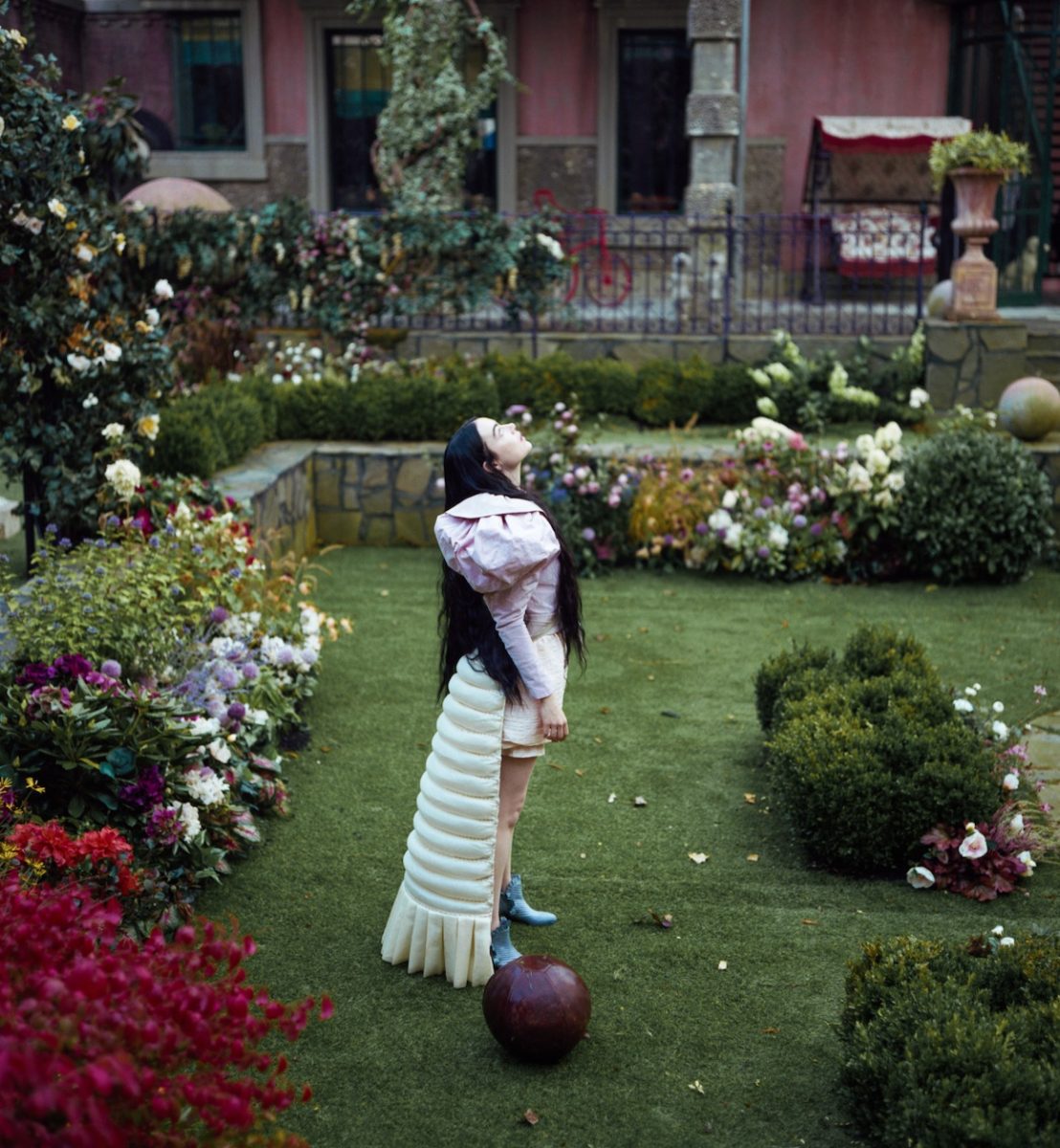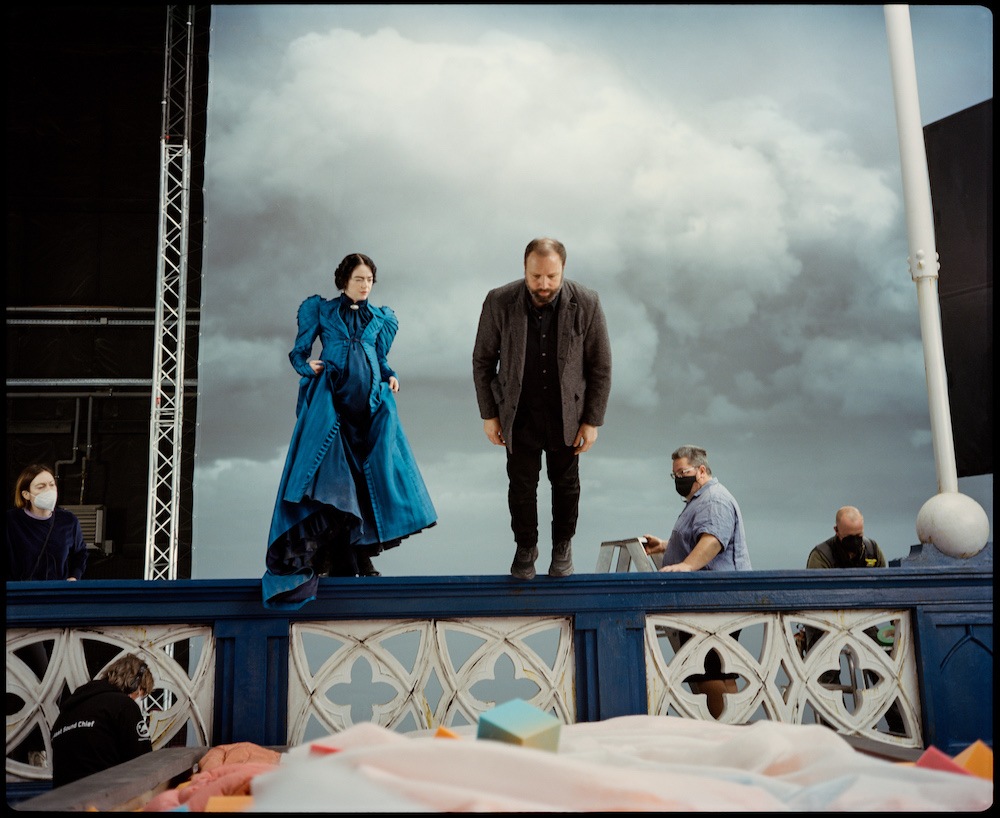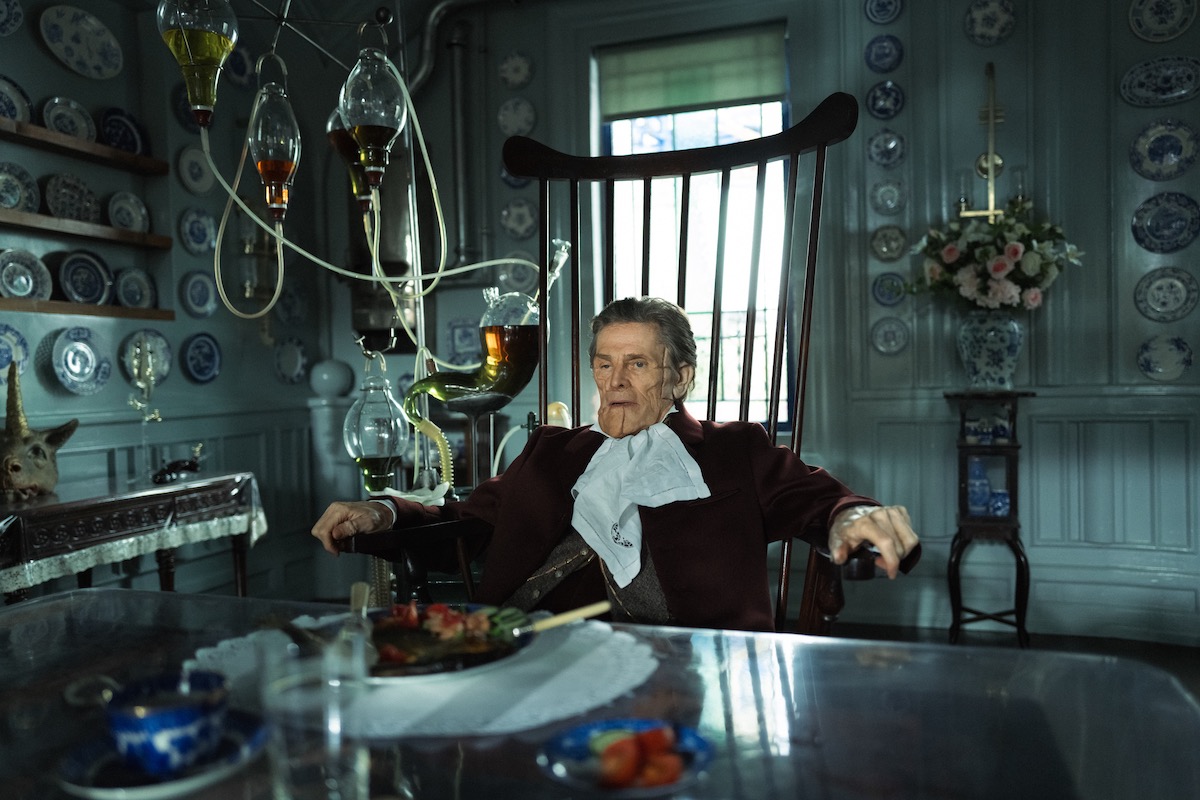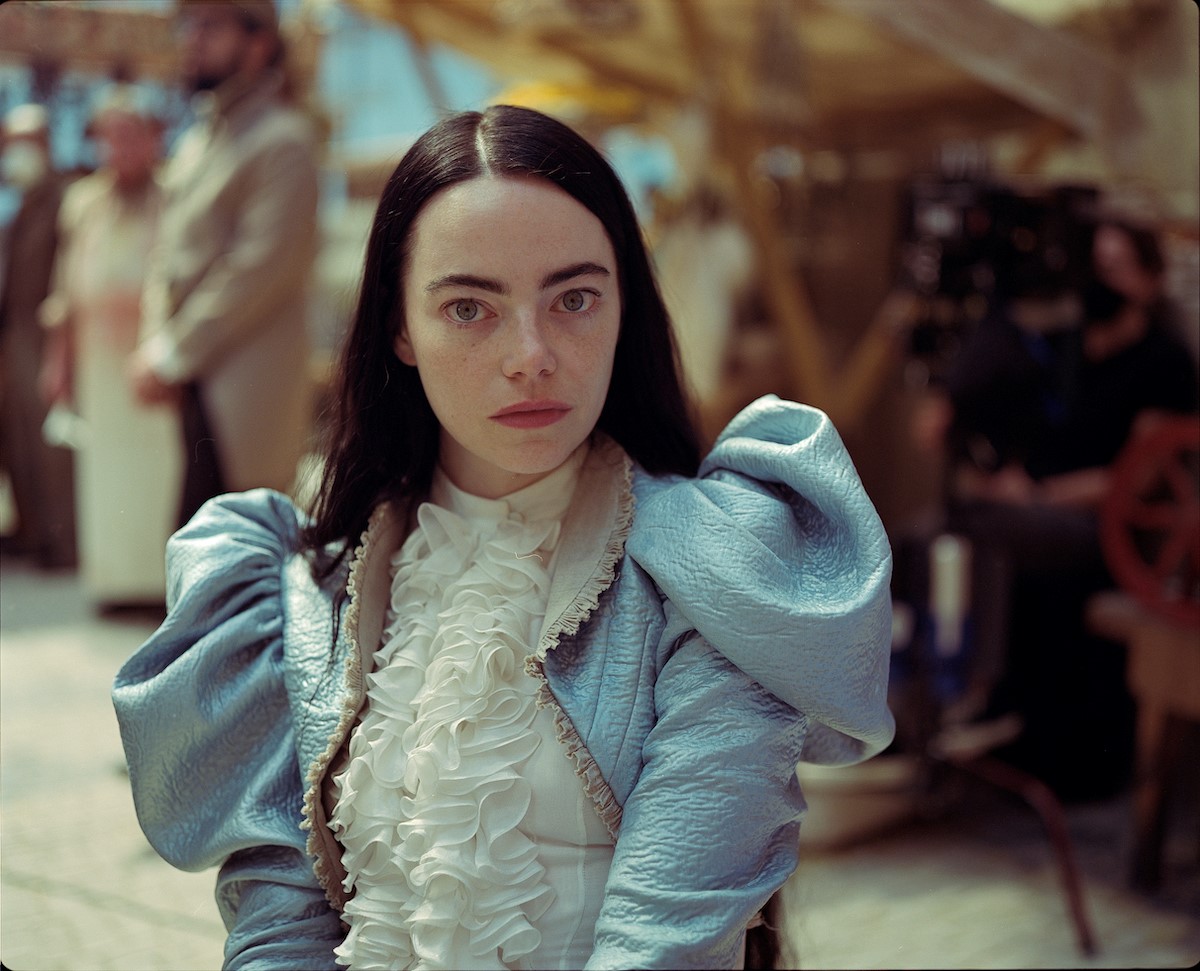Steam technology blended with fantastical elements, pseudo-Victorian costumes interwoven with contemporary fashion. The film everyone’s talking about is also a new plunge into the world imagined by H.G. Wells & Co.
If you were captivated by Poor Things, the latest film from Yorgos Lanthimos nominated for 11 Oscars and currently topping the Italian box office, then you were surely enchanted by its setting, scenography, and costumes that continuously evoke the steampunk aesthetic. But let’s take this one step at a time. The term “steampunk” was coined in the ’80s by writers like K.W. Jeter to describe fantasy works that mixed steam technology and fantastical elements in a 19th-century historical context, but it actually draws inspiration from literary works by authors like Jules Verne and H.G. Wells. Steampunk works often imagine a world where steam technology is predominant, featuring intricate machinery and a blend of futuristic and retro elements; just like the world Bella Baxter (Emma Stone) inhabits in Poor Things, populated by flying steam-powered ships, cutting-edge yet imposing vessels, complex wooden and brass contraptions, and Frankenstein-esque stitched-together mutant animals.
Especially notable is the pseudo-Victorian style of Bella’s outfits: costumes that don’t perfectly reflect the era the action takes place in but offer a suggestion, an idea of convergence between past and future, as well as an important view on the character’s emancipation. Steampunk fashion doesn’t just faithfully reproduce period clothing but intertwines ancient elements with modern technology and fantasy, creating extraordinary creations that mix the romance of the past with fantastical and futuristic elements. Accessories like magnifying glasses, metallic gears, and mechanical details become integral parts of outfits and accessories, turning fashion into a fantastical theatrical experience. A fitting example is Wild Wild West (1999), where the steampunk style is bent into a bizarre spaghetti western or sci-fi western context, with mechanical tarantulas as means of locomotion and costumes that merge the world of saloons with anachronistic science fiction from the 19th century.

Costume designer Holly Waddington, who also worked on the costumes for Barbie and Anna Karenina, has said she was inspired by a painting by Egon Schiele for Bella Baxter’s raven hair and by a series of fashion history references for her outfits: from Schiaparelli’s creations in the ’30s to boots that pay homage to Courrèges, down to the yellow shorts in scenes shot in Lisbon, where the reference is Jodie Foster in Taxi Driver. Ruffs, corsets, and layers of chiffon are constant elements that accompany the gothic journey of Poor Things, where every piece of Bella’s wardrobe goes through the discovery and sexual liberation of her character, weaving together past and contemporary details as per steampunk tradition, but in a much more subtle way. Everything is played on the tapered silhouettes of the outfits, which often emphasize oversized shoulders or exaggerated volumes; drawing from the Victorian and austere looks of the upper bourgeoisie on one hand and creating triumphant and conceptual designs on the other, to show Bella’s unique vision and how her body is changing along with her mindset as the film unfolds before our eyes. A little tidbit: besides the latex cape, one of the most daring looks is definitely the blue dress Emma Stone wears before plunging into the water at the beginning of the film, when she is “still” Victoria Blessington. To achieve that deep hue and align with the film’s atmosphere, it appears the dress was dyed blue up to twenty times. The same goes for the mango-yellow look: an obsession with colors that, combined with one for the garments, helps create a grammar of Bella’s changes.

Other typical steampunk scenario elements can be traced back to the film’s very subject: what ties Bella to the monstrous-looking surgeon-demigod (Willem Dafoe) obviously harks back to Mary Shelley’s Frankenstein, one of the dearest novels to steampunk culture, where the conflicted relationship between body, consciousness, and technology is deep and contradictory. After all, alchemy, magic, and industrial or cyberpunk grafts fit perfectly within the aesthetic canon of steampunk. Among the numerous films that paint these suggestions well, we can mention Mortal Engines (2018), set in a post-apocalyptic world where entire moving cities fight among themselves to fuel the engines they stand on. The Belle Époque-inspired architecture in contrast with antique vehicles (locomotives, airships, submarines) powered by so-called clean energies, are the classic pioneering images of a past future we also see in Poor Things and that spark a short circuit with other possible and catastrophic worlds, sometimes extremely representative of certain critiques of the society we live in.

Consider the lysergic visions of Terry Gilliam’s cinema during the ’80s, particularly The Adventures of Baron Munchausen and Brazil, where the most industrialized districts become prisons or sheet metal cathedrals that trap and determine the way humans live. On this same note, but in a much more classic and accessible key, we find some traces of this genre in very different films like Martin Scorsese’s Hugo Cabret, Guy Ritchie’s Sherlock Holmes, in the Lemony Snicket saga, and, to some extent, in the electric magics characterizing The Prestige by Christopher Nolan. Broadening our view a bit, we discover that Japanese animated cinema is deeply tied to steampunk aesthetics: from Galaxy Express 999 to The Mystery of the Blue Stone, through Neon Genesis Evangelion and Howl’s Moving Castle, they all seem like science fiction stories written at the end of the nineteenth century but with a strongly captivating and contemporary taste.
With Poor Things, the feeling is that the nostalgia for the past, combined with the desire to experiment and imagine an alternative future, is paving a way to reflect on identity and the possibility of rewriting the history of society, albeit starting from absurd and unconventional imaginaries usually seen in the dystopian horrors of Carpenter or Cronenberg. An evolution of the steampunk style – revised and updated for the general public – that, crossing through books and the history of cinema and costume, seems destined to remain as a significant and inspiring pattern for the next worlds (cinematic and otherwise) to come.
Alessio Di Nizio
Rolling Stone Italia, February 6, 2024





